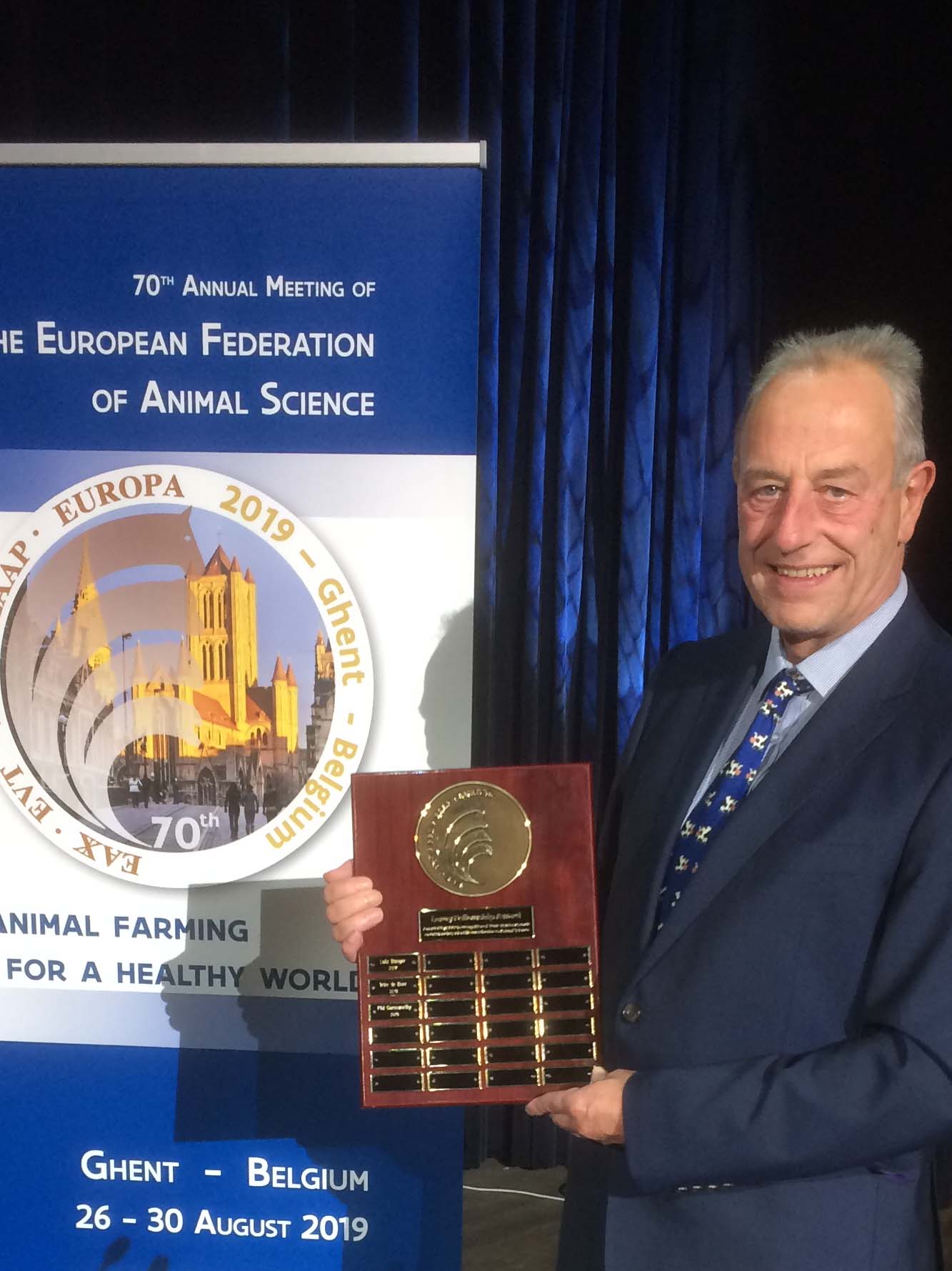
September 25, 2019, by jicke
Does eating meat cause global warming?
Blog written by Professor of Dairy Science Phil Garnsworthy
This year, the European Association for Animal Production (EAAP) honoured me with their Leroy Fellowship Award for “an outstanding contribution to Animal Production over a sustained period.” Acceptance of the award required that I had to deliver a plenary lecture to about one thousand delegates at the annual EAAP conference in August. My subject was Sustainable Intensification of Animal Production. This was a topical issue, which had recently suffered from a lot of misinformation, including headlines suggesting that eating meat was the major cause of global warming.
The 2011 Foresight Report on ‘The Future of Food and Farming’ concluded that to feed the predicted 9 billion humans on Earth in 2050, “Global food supply will need to increase without the use of substantially more land and with diminishing impact on the environment”. The report stated that to meet this target, “Sustainable intensification is a necessity”. Sustainability includes not only environmental issues, but also societal factors such as welfare of animals and people, and economic factors. Intensification does not mean only moving from extensive to intensive systems; it means increasing productivity per unit of land or other resource – i.e. increasing efficiency. Efficiency of animal production has been the focus of my research for many years.
Livestock and global food security
Livestock play a vital role in global food security. Animals, particularly cattle, sheep and goats, eat materials that are inedible for humans, such as grass, forages and trees. They recycle waste products from human food production, including crop residues and by-products from manufacture of sugar, beer, flour and vegetable oils. FAO calculated that 86% of the global livestock feed intake is not edible for humans. Most of the potentially human-edible feed is fed to pigs and poultry because their digestive systems cannot cope with fibrous material. However, much of the grain fed to animals is either rejected for bread and biscuit making, or grown especially for animals on poorer quality land. Virtually all of the protein supplements fed to animals are residues from manufacture of vegetable oils, such as soya and rapeseed oil.
Less than one quarter of available land in the world is used to grow crops; the remainder is grassland. Livestock use 2 billion ha of grasslands, of which only about one third could be used as cropland. In many parts of the world, where crops fail frequently in drought conditions, livestock are the only reliable source of good quality protein. Quality of animal protein is much higher than plant protein. For example, beef supplies 2.5 times more digestible amino acids than soya and 5.3 times more than wheat.
Improve efficiency to reduce emissions
The downside of converting human-inedible feed materials into highly nutritious animal products is the generation of methane. Methane is a by-product of fibre digestion by microbes in the rumen. Unfortunately, methane is a greenhouse gas with a global warming potential of 28 times that of carbon dioxide. Consequently, animal products, particularly beef, have a high carbon footprint per unit weight. This has led some commentators to suggest that reducing beef consumption will stop global warming. They ignore the fact that about 93% of greenhouses gases attributed to human activity comes from things other than eating beef. Switching from a moderate meat diet to a vegetarian diet would reduce your carbon footprint by 1.8 kg per week, which is equivalent of driving 5 miles less per week.
We can do a lot to reduce greenhouse gas emissions by livestock. Changing dietary ingredients to those with less fibre, especially ingredients recycled from the agri-food industry, can reduce emissions by up to 25%. However, the best strategy for lowering emissions is to increase yield of milk, meat or eggs per animal or per unit of land, i.e. increase production efficiency. Increasing production efficiency, through breeding, feeding and management of health and welfare, can reduce emissions per unit product by up to 75%. This is a win-win strategy because greater production efficiency should lead to increased profits for farmers as well as lower emissions.
No comments yet, fill out a comment to be the first

Leave a Reply